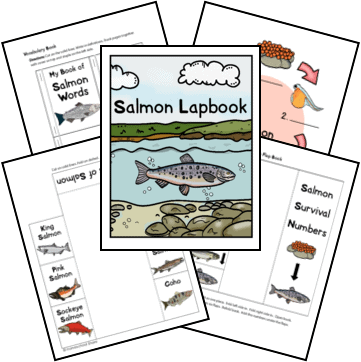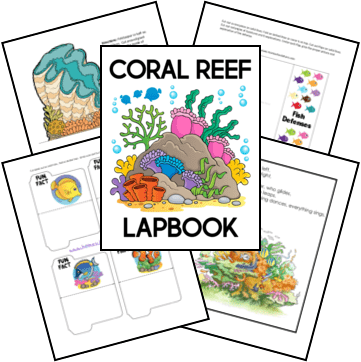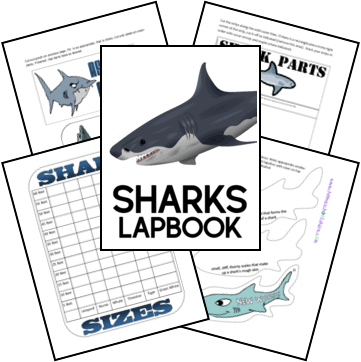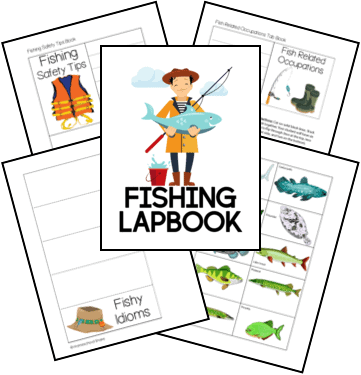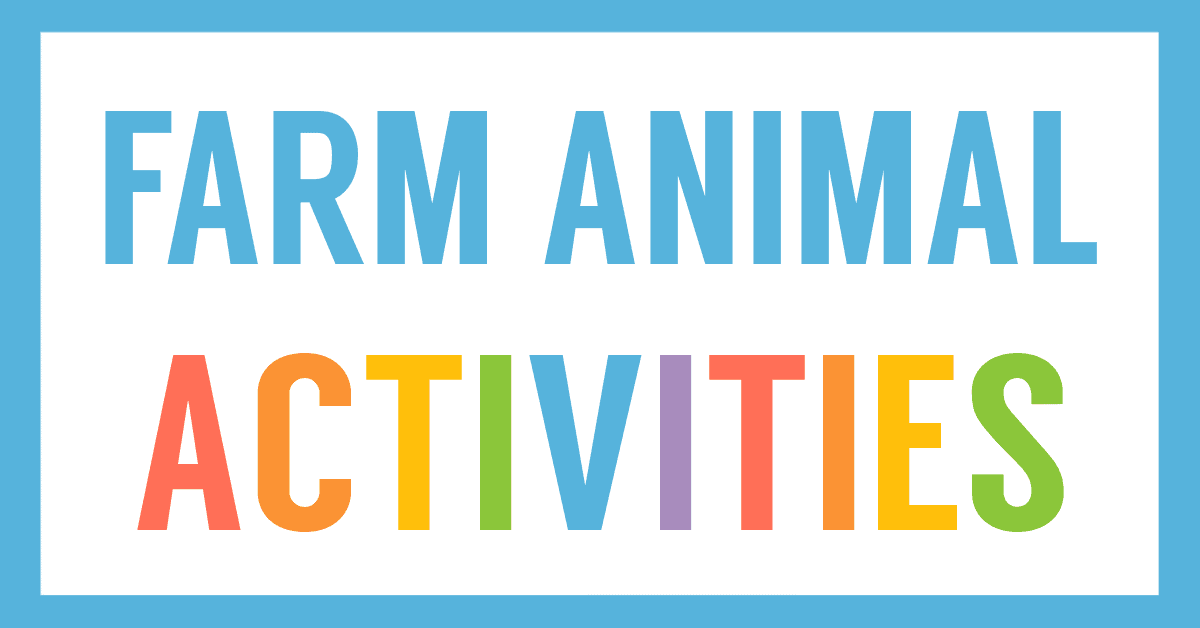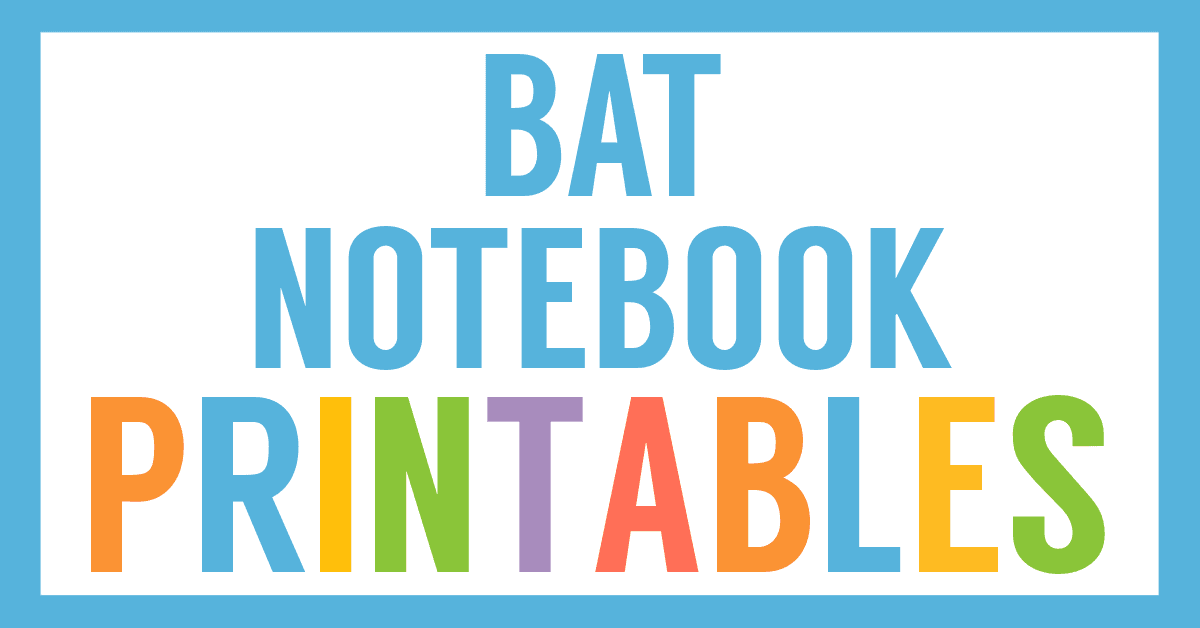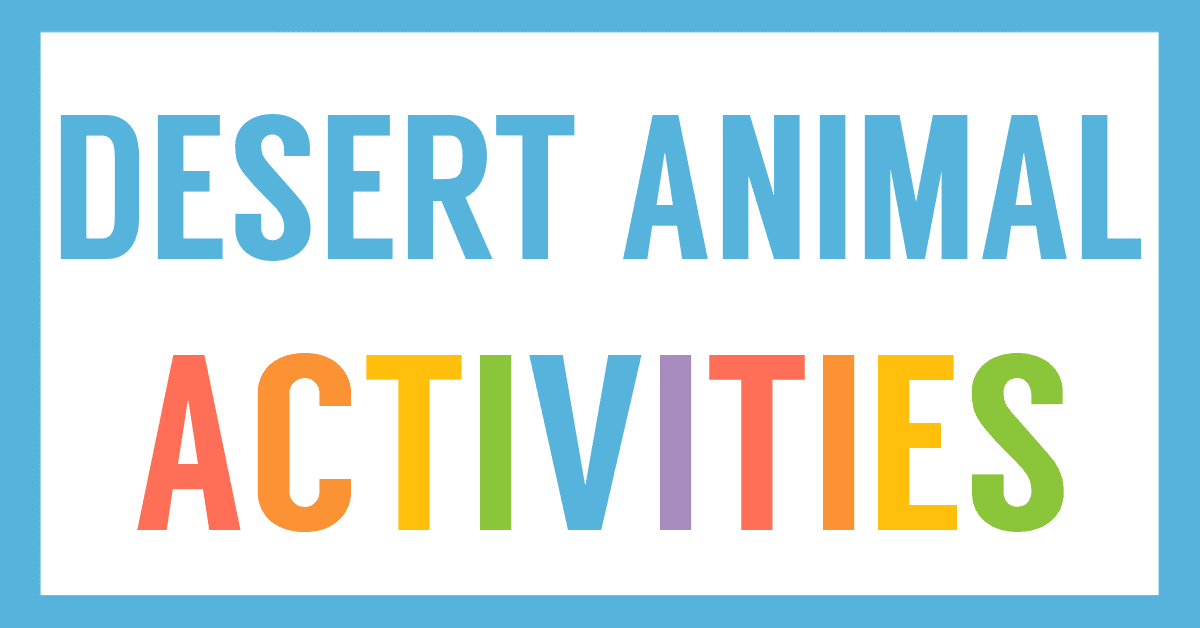Affiliate Disclaimer
We sometimes use affiliate links in our content. This won’t cost you anything, but it helps us to keep the site running. Thanks for your support.
Thanks to Celia Hartmann for compiling and writing the research for this Salmon Lapbook.
Salmon Lapbook Information
Here are some sample lessons from this animal lapbook:
Salmon Predators
Salmon are eaten by man, bears, other fish, and birds like eagles and kingfishers. Because many salmon die after spawning, home streams are littered with decaying fish during spawning time. Bears, eagles, wolves, foxes, ferrets, and other animals take advantage of these easy and abundant meals.
Salmon Life Cycle
A spawning female Pacific salmon digs a nest, called a redd, in the gravel of a stream, where she lays hundreds of reddish eggs, each about the size of a pea. After the eggs are laid, a male salmon fertilizes them by squirting them with milt. After that, the female gently covers the eggs with gravel. The female and male repeats this in different areas of the stream (except for the sockeye salmon, which only makes one redd), until thousands of eggs (2,000 to 10,000) have been laid and fertilized. The male Pacific salmon soon dies after he fertilizes the eggs (except for the steelhead trout, which will once again migrate to the ocean and later return to spawn again.
The Atlantic salmon are similar, except (like the steelhead trout) the Atlantic salmon do not die and again migrate and return to re-spawn. This characteristic of dying after spawning is called semelparity.
The eggs remain hidden for up to 4 months before hatching as alevins. Alevins are tiny fish with a large yolk sac attached to their bellies. This yolk sac provides food as the baby fish grows, so it does not need to find food. Once the yolk sac is used, the small fish are called fry. Some kinds of salmon at this stage develop parr marks, and are so then called parr instead of fry. The parr marks help to camouflage them. Some Pacific salmon are in this fry/parr stage briefly before migrating to the ocean; others a year. Atlantic salmon stay in this stage for 2 to 6 years.
By the time the fry/parr are ready to migrate to the sea, their bodies start changing to allow them to make the move from the fresh waters of the stream where they were born to the salty waters of the ocean to where they will migrate. They are now called smolts.
One of the changes is in their coloring. Their bodies change from brownish-greens that help camouflage them in a stream to a more silver color to help them hide in the ocean. Their blood makes changes that will allow them to need less oxygen in the ocean (there is less oxygen in the ocean than in streams). The salt pumps in their gills also begin to change. In streams, the salt pumps act to keep too much salt from leaving the fish. In the ocean, the salt pumps act to remove the excess salt of the ocean. Isn’t it amazing how God designed the salmon to be able to change at just the right times to allow them to spend part of their life in freshwater and part of their life in salt water! The changes the salmon go through would be like what it would take for us being able to breathe underwater!
Rain is often the signal to the smolts that it is time to make the long journey downstream. They travel at night, and rest by day. If the smolts are delayed (like at a dam), they may lose the urge to migrate and they do not complete the cycle by spawning.
Once the smolts arrive at the estuary, the land where the fresh water of the river meets the salty water of the ocean, they may linger to get used to the salty water. Their getting used to the salty water is called smoltification.
Once out in the ocean, they are considered juvenile salmon. They spend several years in the ocean, growing and maturing into adult salmon. They migrate hundreds or even thousands of miles during this time.
At some point (and scientists are unsure of what triggers it), the adult salmon know it’s time for them to migrate back to their home streams where they were born. They make their way back to the estuary where they entered the ocean to begin the salmon run, the journey home. Once they start swimming back to their home stream, they do not eat. They rest in pools of water to regain strength for the upstream journey. They often have to jump over obstacles, such as waterfalls. The instinctive drive to return home is so strong that they are willing to risk all to go back, and some die trying.
Once they make it back to their home stream, they spawn and the cycle begins again.
You can grab a copy of the entire Salmon Lapbook in an easy-to-print file at the end of this post.
Salmon Lapbook Printables
This Salmon Lapbook includes the following mini-books for your student’s lapbook:
- My Book of Salmon Words
- Where Can I Find Salmon? Map
- Salmon Diagram
- Types of Salmon Shutterflap Book
- Salmon Classification Mini-book
- Salmon Predators Accordion
- Salmon Survival Numbers Flap Book
- Salmon Population Decline Simple Fold
- Life Cycle of a Salmon Simple Fold
- Fresh Water vs. Salt Water
- Salmon Diet Matchbook
- Homing Instinct Matchbook
- Types of Migrating Fish Flap Book
How to Get Started with Your Salmon Lapbook
Follow these simple instructions to get started with the Salmon Lapbook.
- If you want, go to your local library and check out books about salmon.
- Print the Salmon Lapbook.
- Choose and prepare the mini-books you want to use with your student.
- Enjoy a week of reading and learning all about salmon, a fascinating fish!
Download Your Salmon Lapbook
Simply click on the image below to access your free Salmon Lapbook.
Learn More About Fish with These Lapbooks
Grab some more animal lapbooks and have amazing learning adventures with your students.

